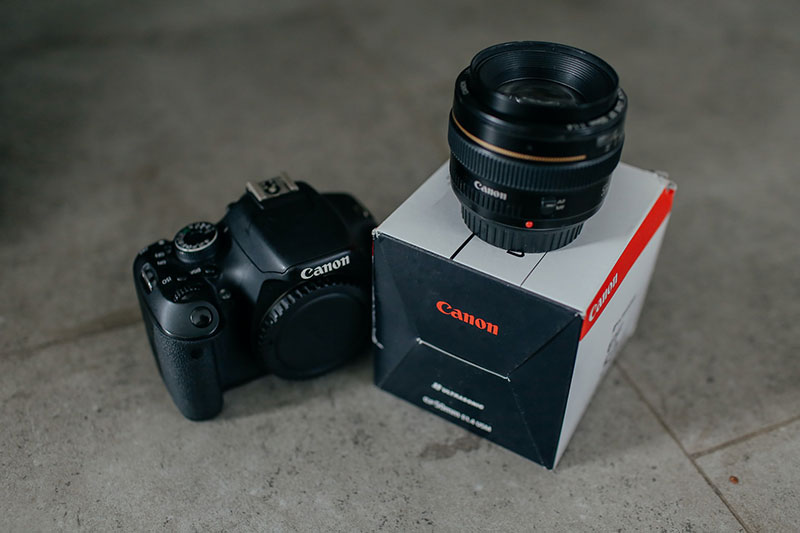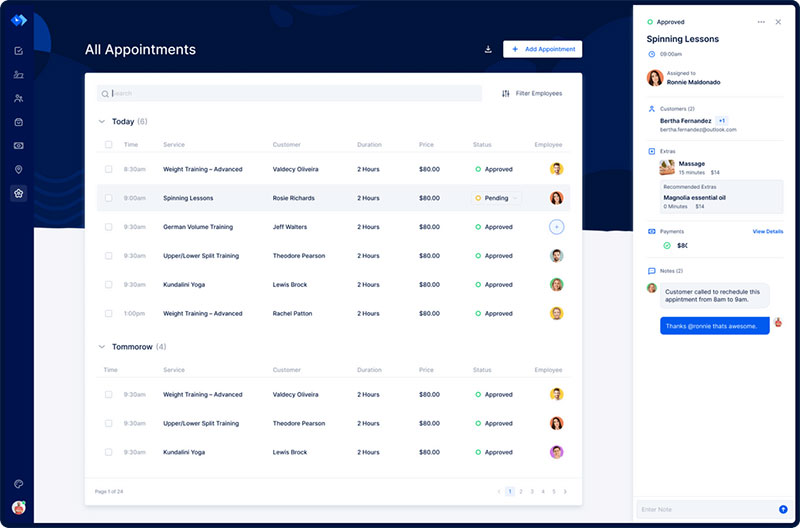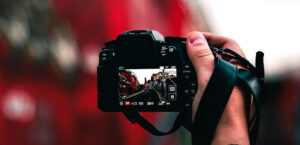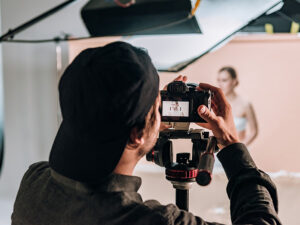For creative people, a photography business is a great source of income or even extra income. Before getting started, it’s important to know the cost of doing business photography.
The photography industry is competitive. So it’s vital to get the right balance between creative passion and business strategy.
This will help a photographer to be successful.
New photographers often struggle with pricing their work. Some struggle to understand the factors that influence photography pricing, such as location.
Is there an accurate photography pricing guide that can help with this part of the business?
This article will discuss the CODB (Cost of Doing Business) as a photographer. This is the main ingredient needed when creating a photography pricing strategy.
Calculate Every Expense Associated With Running A Photography Business
Photography was once a field dominated by highly-trained professionals. Today, digital technology has enabled amateur and self-taught photographers to enter the industry.
As a result, consumers tend to feel that anyone can take great photos. They may even think that photographers are only button pushers.
This perception has devalued professional photography, regardless of the large demand for it. Added to this is the relative affordability of digital cameras and smartphones.
Many photographers further undervalue and underprice their work and end up losing money. Nevertheless, there is a way to determine:
- How much the business is costing
- What the bottom line needs to be
- If the business is operating at a loss or profit
It starts with calculating every expense associated with running a photography business. Understanding this will help prevent clients from taking advantage of you.
People don't negotiate the price for their haircut, dinner, doggie daycare, etcetera. Why then should photographers give in to those who try to undervalue their work?
Realizing that lowering prices results in a lower income makes it easier to stand firm.
It is very expensive to run a photography business. The more established one is as a photographer, the more it costs to run the business.
The Definition Of Cost Of Doing Business (CODB)
Before determining how much to charge, figure out the cost of doing business (CODB). The cost of doing business is the sum of all the expenses associated with a photography business.
One can calculate this by writing out:
- All the business's expenses, including basic office supplies
- Monthly or daily personal living expenses (if running a photography business full time)
Some may have another part-time job that covers their living expenses. However, one should still include some of these personal costs in the calculation.
Cost of doing business (CODB) helps photographers focus on how much it costs them to stay in business.
It helps them to see the monthly or annual amount they need to make to bring them to a zero figure. Anything they make above that is profit.
Writing it all out gives black and white evidence that one must hold to. It will prompt either an increase in prices or the closing of the business.
Determining the cost of doing business may not be fun but it is worth it.
Identifying The Cost Of Doing Business Photography
Even with paying photography customers, a business will have annual and monthly expenses.
Here is a comprehensive list of items you'll spend on. This list breaks down into two categories:
Fixed costs
These are per month or yearly costs that are essential to the survival of the business. These include fees for:
- Internet
- Website hosting
- Mobile phone
One can shop around for better deals but for the most part, these fees will remain fixed.
Variable costs
These are per month costs that fluctuate from month to month. It’s important to know which costs are drinking up the profits.
Some of these costs increase with every new customer. Others are more consistent.
These expenses may include:
- One-off equipment purchases and repairs
- Postage
- Quarterly tax
- Advertising
It’s possible to reduce some of these costs too by shopping around for a better deal.
Fixed Costs Photographers Need To Know
The Workspace

A photographer may use their home as a workspace. In this case, they can charge a portion of their running costs from the house.
This means that if they have a room where they meet with clients, use as an office space, or dedicate to the business, they can use that as a tax write-off.
When getting started photographers tend to work from a spare desk in their house. At this point, they can't claim a room or even a portion of their house as a working expense.
Reliable Internet
A high-speed internet connection is a necessity for a photography business. Be sure to calculate this cost in the totals.
If using your home's internet service, assign a portion of the cost to the business.
Online Services/ Website Hosting
A website is important to the success of the business. And for it to stay online, you need reliable web hosting.
This is especially important when starting out. Photographers can direct customers to their website and choose what information they see.
Insurance Costs
This expense may not seem necessary in the start-up phase. But, photographers at all levels should get equipment and business liability insurance.
In case you can't work, be sure to protect yourself with Life, Health, and Disability insurance. When it comes to health insurance some countries attach this to their jobs, for example, the USA.
Other countries like Australia have free insurance that is separate from one's job.
But, one can buy private health insurance for extras such as hospital cover and dental. This insurance comes with a monthly charge.
Phone Costs
In this digital age, creative professionals run their businesses from their phones. This can be both mobile and landline.
Those who don't have a landline at home can try bundling their phone with their broadband plan.
Software Subscription Costs
Professional photography businesses use industry-approved software like Adobe Lightroom and Adobe Photoshop. These types of subscription-based software attract certain fees. If you're starting out consider using a tool such as PicsArt Photo Editor which contains a large number of exciting tools and a vast library of design assets, completely free.
Member Subscription
These are dues and fees for:
- Association memberships
- Professional publications
- Service organizations
- Chamber of commerce
- Photography clubs, etc.
Accounting And Legal Services
Accounting and legal services are important aspects of running a photography business.
The need for accounting services will depend on the country and how busy one is. However, these are usually required quarterly or once per year for tax declarations.
When it comes to legal fees, a photographer may need to pay an upfront fee. This pays for a lawyer to look over the paperwork and create any necessary documents.
Transportation Costs (Lease, Insurance, Etc.)
Operating from home means paying less for gas than if one commuted to an office. Nevertheless, there are still fees for things like insurance and lease.
Get more bookings with the right tool for the job
Staying organized has never been easier.
You can now manage your business and grow your brand with a single, powerful software that keeps all of your appointments in line, your clients organized and your business booming.
Trafft is perfect for business owners who need to streamline their booking experience both for their staff and their clients.
Trafft handles everything for you, even sending automated email or SMS reminders to your clients. No-shows? Not anymore!
The Trafft booking software adapts to different industries for a blissful online booking experience and employee management.
Want to know more? Check out Trafft's awesome features to see what you are missing.
Variable Costs Of Doing Business Photography
Licenses And Taxes
Serious financial hardship could result if one overlooks costs associated with:
- Business licenses
- Self-employment taxes
- Your company's annual filing
Equipment Costs (Maintenance And Repairs)
Be sure to include annual costs associated with photography gear. For example, potential computer repairs and camera maintenance.
Equipment insurance is helpful. But remember to budget for the deductible and small repairs.
Camera And Equipment Purchases

In the beginning, there is the expense of purchasing all the gear.
Of course, it’s possible to use the second-hand gear. But this is only recommended for those short on cash.
Whether new or used, expect an initial large spend on photography gear. Or spread the costs by gradually building up the kit.
Marketing And Promotion
Promoting your photography service helps to attract customers. This will mean paying for:
- Brochures
- Business cards
- Promotional materials
- Social media ads
- Video Marketing services like Animoto and Clipchamp
- Advertising services like MailChimp, Constant Contact, or AskMimi
- Marketing options like Sticky Folios
Professional Development
A photographer will need money to pay for courses to improve their skills each year. This ranges from photo editing and technical lighting courses to business management courses.
Shipping And Postage
This is money for non-billable postage and shipping. This covers:
- Sending equipment to a repair shop by courier
- Promotional mailings
- Holiday cards, etc.
Computer Equipment (Hardware & Software)
Computer equipment is necessary and expensive. Thankfully, this type of equipment tends to last for a few years.
If you're working on a MacBook, you can use a tool like CleanMyMac cleaner to ensure your laptop lasts longer by regularly removing unnecessary files and caches that can slow down the system.
Office Supplies
There are many small items that one needs to conduct business. Don’t overlook them when calculating the cost of doing business.
These include:
- Paper
- Pens
- Labels
- Office chair
- Scissors
- Desk
- File cabinet
Employees
The more a business grows the more help it will need to meet the demand for services. A photographer may need an assistant to handle customer service while they're shooting.
Or, they may require an employee to handle day-to-day tasks so that they can focus on growing the business. Consider how much it will cost to pay an assistant each week or for each shoot they assist on.
Vehicle (Maintenance, Fuel, Parking)
A car's insurance and registration are usually defined as fixed costs. But the maintenance costs vary.
Calculate the cost of the annual or half-year service on the car. Also include the cost of fuel used in connection with shooting a session.
Utilities
Photographers who have a photo studio in their home should calculate its square footage. This is space that is set aside for the business.
Then determine the percentage of costs to allocate to it relating to:
- Electricity
- Heat
- Water
Outsourcing
Always count payments made to anyone, whether there are current photo jobs or not. These include payments to:
- Cleaning staff
- A photo editor
- A receptionist
- An administrative assistant
- A studio assistant
Travel
Be sure to account for travel expenses, such as:
- Airfare
- Hotels
- Rental cars, etc.
Include any travel costs related to your photography work that are not being paid for by the client. These include educational training, photo trips, and meetings.
Phones
Using a personal cell phone and landline to help run the business? If so, include an appropriate percentage of these costs in the budget.
Set this money aside for when you need a new phone.
Salary
The cost of doing business differs from photographer to photographer. For example, natural light family portrait photographers have different expenses from advertising photographers.
Remember too that self-employment rarely comes with a fixed weekly pay. So, be sure to pay yourself well above minimum wage.
There may be a slow week or two and occasional slow months. There will also be unforeseen circumstances.
Set prices that provide a large enough salary to cope with these periods.
Using CODB To Determine Pricing
Figuring out the cost of doing business isn't enough. It’s also necessary to know how to use it when pricing the work.
First, keep in mind that the CODB does not equate to what one should charge. Nor is it the cost of goods sold to the clients (COGS).
The CODB is the expense incurred to get the work done. To make money, calculate a salary on top of that.
For instance, if the CODB is $15 an hour, one could make the mistake of charging $115 for a 1-hour session. This would work out as $100 for the profit and $15 to cover the expenses.
Why would this be a mistake?

A one-hour session does not equate to 1-hour of work. You would have failed to factor into the cost the time spent:
- At the initial consultation with the client
- Traveling to the location of the shoot (if necessary)
- Setting up the equipment and waiting for the client
- Taking down the equipment
- Editing the photos
- Meeting with the client or sending them the photo results
- Producing prints and arranging delivery
With these points in mind, it's clear that a 1-hour session can mean up to 6 hours of work. So, what is wrong with the $115 session price?
Six hours multiplied by $15 gives $90 as the true CODB, which means that a $115 price would turn over a mere $25 for 6 hours of work.
The above figure is too low to provide a photographer with a proper salary.
Factor in a little extra for the slow periods as well. This is especially necessary for those just starting up or revitalizing their business.
Here are a few steps to estimate pricing using the cost of doing business:
Step 1. Multiply the cost of doing business by the projected number of hours it will take to finish projects.
Step 2. Add in the desired salary.
Step 3. To make educated pricing decisions divide this total into 'cost per billable unit'. This is the minimum you will make for each hour spent on a client's project.
This per-hour figure should include CODB and the desired profit. It shows what one can charge for any job.
To do this, multiply the per-hour figure by the projected number of hours it will take to complete the job.
This also gives an insight into the lowest average amount clients need to spend. Thus photographers can price any job for any type of photography.
All that's left now is to figure out how many clients one can serve each month. If focusing on one photography genre this is easy.
Divide the total number of monthly workable hours by the average number of hours spent on a single client project.
FAQs about the cost of doing business photography
1. What is the typical hourly rate for a professional photographer?
A professional photographer's hourly pricing can change depending on the location, level of experience, and type of photography.
Photographers typically bill between $100 and $250 per hour. But, depending on the sort of session, the tools used, and the level of experience, some photographers may charge more or less.
2. How much does it cost to book a photography session for a specific event, such as a wedding or corporate gathering?
The price of scheduling a photography session for a particular event, like a wedding or corporate gathering, can differ significantly based on the venue, duration, and quantity of photographers needed.
The typical price range for wedding photography packages is $1,500 to $5,000 or more. The price per hour for corporate event photography might range from $200 to $500.
3. Are there additional fees for editing or retouching the photos after the shoot?
While other photographers might charge extra for these services, certain photographers might include editing and retouching in their pricing packages.
It is crucial to discuss the details with the photographer in advance to ensure that you are aware of the services that are covered and any potential additional fees.
4. What is the average cost of licensing photographs for commercial use?
Depending on the intended usage, the anticipated duration of use, and the size of the intended audience, the cost of licensing photos for commercial use may change. The average licensing charge for a single photograph might be between $100 and $1,000 or more.
5. Is there a minimum or a maximum number of photos that will be included in a package deal?
Depending on the photographer and the package being given, the number of images included in a deal can change. In order to ensure that you fully understand what you are purchasing, it is crucial to make this clear upfront.
6. What kind of equipment and gear do professional photographers use and does this affect the cost of the shoot?
The tools and gear used by professional photographers include cameras, lenses, lighting, and editing software. The type and caliber of the gear used might determine how much a shoot costs because better gear may be more expensive to buy or rent.
7. Are travel expenses or accommodations included in the photographer's fee?
Travel and lodging costs are typically not included by the photographer's fee and may be charged individually. This is particularly valid in the case of destination weddings or other occasions where the photographer must travel a great distance.
8. How long does it typically take to receive the final photos, and is there an additional fee for expedited delivery?
Depending on the photographer and the particular shoot, the time it takes to get the finished images can change. While some photographers may include a regular delivery time in their cost, others may charge extra for rapid delivery.
9. Is there a difference in cost between shooting on-location versus in a studio?
Due to the potential need for additional equipment or travel fees, on-location shooting may be more expensive than studio shooting. To ensure that you are aware of any potential cost differences, it is crucial to discuss this with the photographer in advance.
10. How do I determine which package or pricing structure is the best fit for my needs and budget?
It is crucial to take into account elements like the length of the shoot, the number of photographers required, the level of experience required, and the overall budget in order to decide which package or price structure is the best fit for your demands and budget.
It is also beneficial to look over examples of the photographer's earlier work to make sure that their quality and style meet your standards.
Conclusion on the cost of doing business photography you should take into account
The cost of doing business helps one measure the potential failure or success of a project. It is the rock bottom monthly cost (without profit added in) that is necessary for survival.
Some photographers devalue the industry by ignoring the cost of doing business. They accept rates that are not enough to cover their business expenses, much less earn a profit.
This wrong approach perpetuates the thinking that photographers have little value. Many nonprofits believe that photographers will work for whatever they are offered.
So, take into account the CODB, and if a client isn’t willing to pay, be fully prepared to walk away.
If you enjoyed reading this article about the cost of doing business photography, you should also read this one about portrait photography pricing guide.
We also wrote articles about similar subjects like real estate photography marketing, how to get more photography clients, becoming an event photographer, how to become a licensed photographer, social media marketing for photographers, real estate photography contract, appointment scheduling for real estate agents, how to get your photography noticed and photography mood board.







